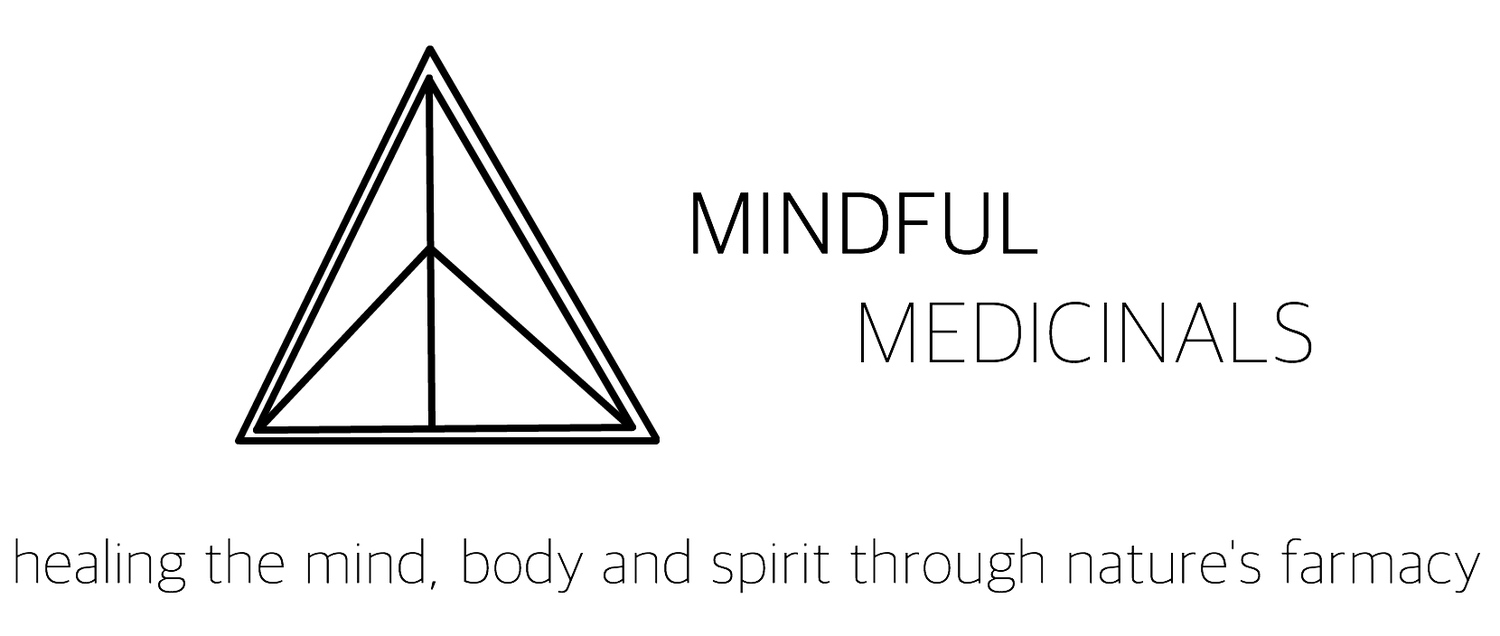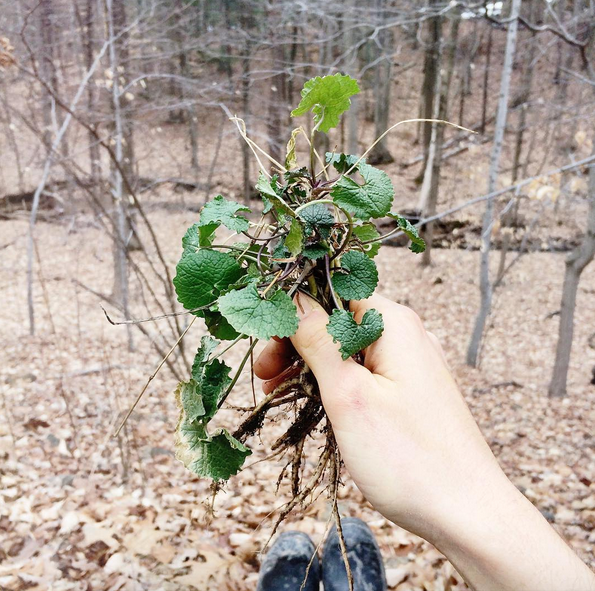"If you are a plant person, Spring means all of your friends coming back,"
- David Winston
THIS WEEK IN PLANTS:
I think it was either Witch's Butter or Partridge Berry that gave me the idea for this blog series - I can't remember. Either way, it's been almost two years since my last series (#FlowerEssenceFriday), so it's about time I re-dedicate myself to writing blog posts. In short, this series is for me to sit down and share the photos I've taken of plants throughout the week and write a little bit about them. My hopes are that it will inspire you to get out there and notice the subtle but very real changes that happen throughout the season and that it will get your booty out in nature!
A simple exercise in ritual, continuity and getting to know the land, if you will. Also, a digital compost pile for the hundreds of photos that are on my phone.
This week: Trout Lily (Erythronium americanum), Bloodroot (Sanguinaria canadensis), Dutchman's Breeches (Dicentra cucullaria), Garlic Mustard (Alliaria petiolata) and Partridge Berry (Mitchella repens) (not in flower - don't care - it still has a message).
Trout Lily (Erythronium americanum) - a spring ephemeral from the fairy world
- leaves are an emetic (induces vomiting) and expectorant (helps dispel mucous), and water extracts have been shown to be effective against gram positive and gram negative bacteria (can't find the research to support that claim, but super cool if true)
- trout lilys can take up to 5 years to bloom and their colonies may be hundreds of years old - even before knowing this, I never harvested more than a leaf or two for a salad. They're sweet, but one bite too many and it gets weird/gross tasting. lessons in respect.
- it's flower essence may be used for problem solving, as it helps one see the finer details of of the issue and better plan to resolve them
Bloodroot (Sanguinaria canadensis)
- One of those flowers that leaves you a little breathless and saying "I can't believe you are real." I literally jumped for joy when I found a patch of these with fresh petals on them! Photos are from the Appalachian trial in Northern Jersey.
- From a medicinal point of view, this is a very low dose herb (it's a cardiac sedative in high doses..) and from a sustainability point of view, it's endangered and should be left to be admired, not harvested.
- Those who make a flower essence of it say that it is used to heal old/ancestral/genetic wounds and to heal from feelings of unworthiness
Dutchman's Breeches (Dicentra cucullaria)- a forest floor of these may not have RCT on being uplifting, but my N1 study says that there is a 8/10 chance it will put a smile on your face
- contains CNS depressing alkaloids, traditionally used as an alterative (i.e., enhance the normal eliminatory functions of the body), though, due to possible toxicity and habitat lose and over harvesting, most herbalists do not use Dicentra species period
- specifically pollinated by Queen Bumblebees!
Partridge Berry (Mitchella repens) - not in flower, but a plant that had a few words to share with me nonetheless
- this plant had a direct message for me: "until you accept, honor and recognize your lower body, you are going to be unable to let energy flow outside of you in a smooth and productive way." I'm working on it, Mitchella...
- medicinally used as a uterine tonic to strengthen/tone the uterus in cases of dysmenorrhea with heavy bleeding
- Physiomedicalist T.J. Lyle MD recognized this plant as a general tonic to the uterus, as well as the nervous system, digestive system and kidneys. In fact he states, "It would be rather difficult to misapply Mitchella,"
- We should be cautious when gathering this herb and specific when using it medicinally, as it grows rather closely with the quickly dying off Eastern Hemlock and may disappear as the trees begin to..
Lastly.. Garlic Mustard. I don't have a photo of this flower right now - but a quick google search (here - did it for you) will show you what this delicious, weedy invasive species looks like. Don't be that asshole who takes 2 garbage bags of ramps from the woods - be the hero who takes 2 garbage bags of garlic mustard. Read below for why:
Garlic Mustard (Alliaria petiolata) - an aggressively invasive, species that can and should be used as both food and medicine
- flowering tops + the leaves are delicious in pesto + sauteed or cooked how you would cook spinach; the flavor is mostly garlic with a hint of horseradish and it is delicious mixed into butter and I imagine it would be tasty wilted and then infused into olive oil for a salad dressing
- pre-flower roots have a mild horseradish odor and can be pickled as such
- medicinally, this plant contains the medicinal properties of both a mustard AND garlic; it contains reportedly anti-cancer mustard family compounds called isothiocyanates and cancer preventative compounds from the garlic family called allyl sulfides
- one called "Sauce alone" in England, as county folk would make a simple sauce out of it to eat alongside bread and meats
- produces allelochemicals that impedes the function of the beneficial fungi needed for other plants and trees to grow + contains glucosinolate sinigrin, a chemical that Toothwort's contain that triggers the West Virginia white butterfly to lay eggs, but eggs laid on Garlic Mustard rarely hatch, meaning this plant may be detrimental to butterfly population
It's warm outside. The plants are back. The sun is shining. I have a sunburn as I type this and couldn't be happier about it. Please go outside. I promise, there is a 0% chance you will feel worse after a walk in the woods. And the woods needs you, too. It needs people to be in it who ask people "You're not takin' 2 bags full of ramps bulbs are you?" and who challenge them when they (literally) respond "they sell for $15/lb in Union Square!". It needs you to pick up trash, to pick the Garlic Mustard. And it needs you to learn how to be quiet enough to listen to mushrooms who tell you to write blog posts and flowers who tell you we are out of touch with our lower body. Because the more we get to know the land, the more we get to know ourselves. And, really, you never feel worse after a hike. Or hugging a tree. Or picking up trash. I could go on and on..
'The land knows you, even when you are lost.' - Robin Wall Kimmerer
Sources:
- http://www.sierrapotomac.org/W_Needham/GarlicMustard_050306.htm
- http://chestnutherbs.com/partridgeberry-materia-medica/
- http://www.restoringthelandscape.com/2013/06/pollination-of-dutchmans-breeches-royal.html
- https://www.herbalstudies.net/_media/resources/library/Physio-Medical-Therapeutics.pdf







